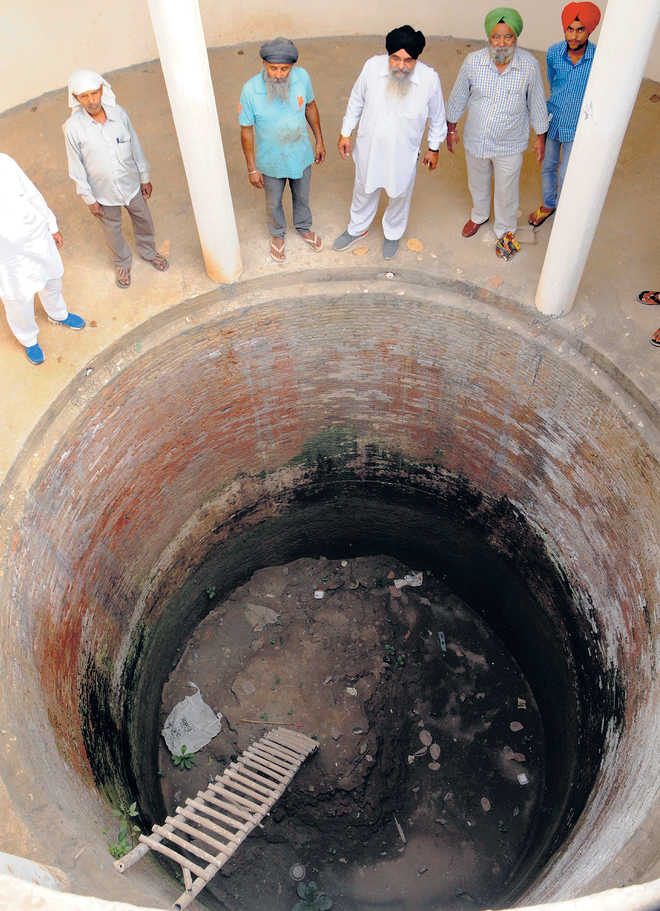GS Paul in Amritsar
Ajnala is a sleepy town, about 30 km from Amritsar. It is in Ajnala where a significant chapter of the First War of India’s Independence in 1857 was written. There’s an open welcome gate with an inscription on its top ‘1857 Kalianwala Shaheedi Khu Yaadgari Gate.’
It is in this well (khu) where lie buried 282 soldiers of Mian Mir Cantonment in Lahore. Some are believed to have been buried alive by the British on August 1, 1857. “Kaliawala Khu” (as the British called Indians as ‘Kale’) lends Ajnala a unique place in history. But no government has cared to give the town its due recognition.
A semi-finished memorial stands as commemoration. Former CM Parkash Singh Badal had announced a memorial-cum-museum to develop its surroundings. The residents say the government invested Rs 3 lakh and then forgot about the ‘museum.’
About 700 metres from the memorial is the British-era tehsil building made up of nanakshahi bricks. Various versions of history indicate that while 237 soldiers were lodged in the Ajnala police station, 45 were stuffed in a dingy corral here, before being buried in the ‘Kalianwala Khu”. Some portion of this old tehsil building has been restored and protected as a monument. However, the exact enclosure where some died of asphyxiation before being buried into the well is in a shambles.
Though old timers are aware of the incident, nobody had any inkling about the exact location of the well till December 4, 2012. A few residents recall that while digging up a portion in the area, they came across an outer wall of the ‘khu.’ Surprised over the finding, many like Amarjit Singh Sarkaria and others formed Kalianwala Khu Yaadgar Foundation.
“We knew the historic importance of the place, but could not zero in on the exact location of the well. A small gurdwara was already there then which was being managed by the local committee. Due to some construction, we had to dig up a portion of an adjoining land. To our surprise, we discovered a ‘nanakshahi’ brick wall underneath. This was enough to give us a hint about the tentative location of the well,” says Sarkaria. Since, it was beneath the spot where Guru Granth Sahib was installed in the over four-decade-old gurdwara, the residents stopped the digging as it was a sensitive issue.
Residents had informed the DC and SDM about the urgent need to undertake the excavation work. Yet nothing happened. They then decided to take it up on their own. This was the reason why many skulls, daily use articles, ornaments and artefacts were damaged during the excavation. For gurdwara, people contributed generously to purchase adjacent land. A new multi-storey complex was built in an adjoining plot where the re-installation of Guru Granth Sahib was performed by Akal Takht Jathedar Giani Gurbachan Singh on January 3, 2014.
Then started the excavation on the 2-kanal-8 marla plot on Feb 28, 2014. “We waited for about a year to resume excavation. When the district administration didn’t bother, thousands of patriotic residents volunteered to come forward,” says Dr Manjit Singh, a resident living in the area for over five decades.
On April 13, 2014, around 20 ft deep inside the well, nearly 95 skulls, 170 intact jaws, 7,200 tooth pieces, 26 skeletons joined with skulls were recovered from the well. Some coins of East India Company dating back to 1830-1840, two British medals and 24 karat gold beads, rings, bangles and amulets were also found. The management committee of Gurdwara Shaheed Ganj, on whose premises the well is located, intends to showcase these articles, including medals and coins, in a memorial which the committee plans to build.
Unlock Exclusive Insights with The Tribune Premium
Take your experience further with Premium access.
Thought-provoking Opinions, Expert Analysis, In-depth Insights and other Member Only Benefits
Already a Member? Sign In Now











